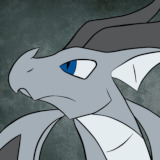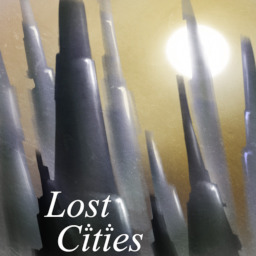Why It Works #2 – The Dream Palace of the Highborn · 1:50am May 10th, 2018
Cold in Gardez’s Lost Cities is a masterpiece of pony literature. Themselves inspired by Italo Calvino’s Invisible Cities, these are stories which contain no on-screen characters. Instead, they are a description of a place – a dead place, an abandoned place, a city or fortress or tower that once held people, but which now lays in ruin or is otherwise abandoned.
They’re very unconventional stories as a result, and rely very heavily on absolutely marvelous prose, which helps impart the grandeur and ruin of these places, both at the same time. They lack characters or a conventional plot, instead talking about a place.
And yet, at the same time, these stories are not quite what they seem. And I thought I’d illustrate this by talking about the first story in the Lost Cities collection, “The Dream Palace of the Highborn”.
If you haven’t read it before, I’d highly recommend doing so now; it is one of the best stories I've read, and is only a bit over a thousand words long. You don't need to read the others in the collection (each chapter is an independent short story).
Done?
Good.
While this is certainly an unconventional story, I actually think that this story is a bit more conventional than meets the eye. What makes it seem so strange is that the entire story is told by implication, and not only that, but by describing a building, and then using those descriptions to secretly tell us a story in our minds.
On its surface, The Dream Palace of the Highborn is a description of an enormously tall ruined tower.
But it is actually a story about the rise and fall of the civilization that built it, structured in a surprisingly conventional (if disguised) fashion.
We start out with the introduction, and immediately, we’re hit with very high-quality prose – Cold in Gardez is an excellent writer, and it shows here. His descriptions are vivid, not only giving us an idea of what something looks like, but also instils emotions in inanimate objects – the clouds “mock” pegasi who try to shape them, the ocean is wild and cruel. It also likens things to rather menacing objects, describing the edge of the cliff as “a knife that cuts the world in two”, and referring to the tower as an “imperfection”.
And once we see the tower, we want to know more about it. This is a really impressive structure – a tower that stands so tall that it seems to touch the sky, one that can be seen rising over the curvature of the planet as you approach. This is a monumental structure, and we want to know more about it. The tower’s imposing form – and the vivid descriptions, combined with the emotional resonance of the language – all serves as a powerful hook, to draw the audience into the story, with the first part ending with
For a dozen centuries the White Queen ruled from the tower’s silver throne, and they believed, in their hubris, that the dream would last forever.
It did not. No unicorns remain in the Heartspire. The only souls here are ghosts.
But there are many of those.
Which sets us up for the rest of the story – we know that this tower was a mark of hubris, and we want to know why this monumental achievement has been left to fall into ruin, in a very evocative manner, and the promise of there being “many” ghosts suggests that many ponies died here.
We’re then put into the rising action of the story – we’re shown the hubris in the next scene that we were previously just told about, shown the magnificence and splendor of the structure, that even as a ruin, it can still impress us with its grandeur. The garden and the residences suggest an extreme level of opulence, and give us two scenes to understand why the unicorns who once inhabited this structure would have so much hubris – they were a mighty people.
But this sort of thing can get dull after a while, and so the story moves on from it. We know that they were mighty – and on the third floor, we start to see their downfall, a castle in a vast open space in the middle of the tower, with an opulent pedestal and throne. This is all mighty, but we are left with our first true sense of ruin here that wasn’t just caused by time – we’re told of the throne, which has been completely obliterated, and a scimitar, still layered with frost despite centuries if not longer having passed since the place was abandoned. And we’re given our second hook to pull us through the rest of the story – we’re told that “History records precisely one visit by Luna and Celestia to the Heartspire,” giving us the “who” and “what” of the end of this civilization, but not the why.
By answering one question, but leaving us with another, CiG pulls us into the darker half of the story – the half where we find out just what it was that drove Luna and Celestia to destroy this place. And the second half is darker as well – we leave the opulence of the lower part of the tower, to move into a hidden, confined space. This is a very clever device – not only does this reflect the fact that the awfulness of the Heartspire is not immediately obvious to the eye, seeing as the rot is hidden from easy public view, but in being led into this secret space to the narrative, we’re given the sense that we, the audience, are discovering something that was hidden.
Here we see from the descriptions of the murals on the walls is that the unicorns of the Heartspire had enslaved the earth ponies who had originally worked by their sides as equals, forcing the ponies to help them build the tower as slaves while reclining in luxury; the higher we go, the worse things get, as the unicorns grow and the earth ponies diminish, until they are gone entirely from the history of the unicorns – and it is at this point, we get:
For the first time, a scent other than dirt and stone fills the air. It drifts in from the opening.
It is ash.
The next scene is the climax of the story, and the murals which show us end have been obliterated entirely – and yet, that itself, combined with what little else remains, is telling. The stone altar, slumped and melted, in a ruined chamber blackened by the power of incredible fire (implied to be solar fire, from Celestia), tells us that the unicorns had been engaging in human – well, pony – sacrifice, presumably to power themselves, also lending a darker nature to the basins down in the room below (possibly to catch blood), but it was still no match for the might of the gods – er, pony princesses, lending the piece something of the sense of a morality tale – that no matter how much power you think you might have, if you do awful things to get it, you will be cast down from above.
The story concludes with
The surviving walls are blackened, but they still tell a story. Rows of unicorns bear earth ponies in the air above them, carrying them up spiraling ramps, higher and higher, past gardens and homes and a throne and basins flowing with water. Higher and higher the unicorns bear their captives, until they reach a room with a stone altar.
The rest of the story is lost, along with the walls in which it was carved. Only the Heartspire’s ghosts know the rest.
Along with Celestia and Luna, who visited the Heartspire but once.
Giving us a powerful bit of repetition, as well as the sense of us knowing a secret – as while “the rest of the story is lost”, we, the reader, still know what happened.
This story is one of my favorite stories of all time, and it is one of my favorite stories precisely because of how well it uses implication to tell us a story, as well as how much emotional resonance it manages to get out descriptions of mere objects. The sense of the story unfolding ahead of us, not in chronological order, but in an order which manages to tell us a proper story, with a hook (the mystery of the ruined tower), rising action (the might of the unicorns as well as the who, how, and why their civilization was destroyed), climax (the reveal of the true horrors of the unicorns), and resolution (Celestia and Luna casting them down, proving they weren’t so mighty after all).
Every time I read this story, I want to write a lost city of my own, and I think the fact that over half a dozen other people have felt that same impulse really speaks to the power of this – a piece of fiction that inspires others to also try to reach such heights is quite the achievement.





It's such a massively successful first chapter, that the rest are, in a way, echoes of that first titanic crescendo, and are successful to a greater or lesser extent in so far as they reiterate that first cluster of leitmotifs and harmonics, or they fail and fall and trail off in dissonant minor-key diversions.
It's a hell of a monument to copy, and almost impossible to improve upon.
The story's already on my read later list, but you've definitely convinced me to read it next with the appraisal in the first few paragraphs.
I go back and re-read The Dream Palace of the Highborn once every few months. It's just that good.